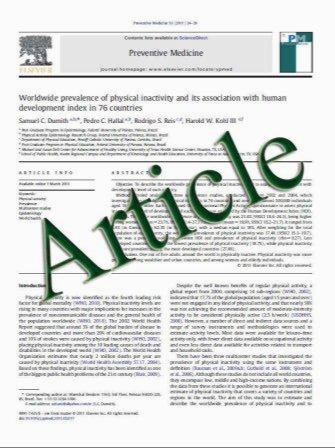Metagenomic analysis of the peri-implant and periodontal microflora in patients with clinical signs of gingivitis or mucositis
- نوع فایل : کتاب
- زبان : انگلیسی
- مؤلف : Wieland Heuer & Andreas Kettenring & Sascha Nico Stumpp & Jِrg Eberhard & Eva Gellermann & Andreas Winkel & Meike Stiesch
- چاپ و سال / کشور: 2011
Description
The long-term success of osseointegrated oral implants is endangered by inflammation of peri-implant hard and soft tissues caused by bacterial biofilms that may have been initiated by bacterial transmission from the adjacent dentition. The present study aimed to compare the bacterial communities at inflamed implant and tooth sites by broad-range PCR techniques to evaluate the etiological processes of peri-implant and periodontal diseases and potential future therapeutic strategies. Eighteen samples of peri-implant and periodontal microflora were collected from nine partially edentulous patients with implantretained crowns or bridges revealing clinical signs of gingivitis or mucositis. The clinical parameters plaque index (PI), probing depth (PD), and bleeding on probing were recorded. Amplified fragments of bacterial 16S rRNA genes were separated by use of single-strand conformation polymorphism analysis, and sequences were determined to identify the predominant bacterial genera. The clinical parameters PI and PD were significantly different at implants (PI=0.4±0.7, PD=3.1±0.6 mm) compared with teeth (PI=1.8±0.8, PD=2.5±0.2 mm). A total of 20 different genera were found at the inflamed tooth and implant sites. The microbial diversity of the microflora surrounding the remaining dentition (12.0±3.8) was significantly higher (p=0.01) than the diversity of the periimplant microflora at implant-retained crowns or bridges (6.3±2.3). Within the limitations of the present study, the microbial diversity of the investigated implants and teeth with clinical signs of mucositis or gingivitis exhibits substantial differences, demonstrating that transmission of the complete bacterial microflora from teeth to implants could be excluded. Furthermore, broad-range molecular biological detection methods specify bacterial genera and species in the peri-implant and periodontal microflora which were not in the focus of research interests so far
Clin Oral Invest DOI 10.1007/s00784-011-0561-8 Received: 22 July 2010 / Accepted: 18 April 2011


